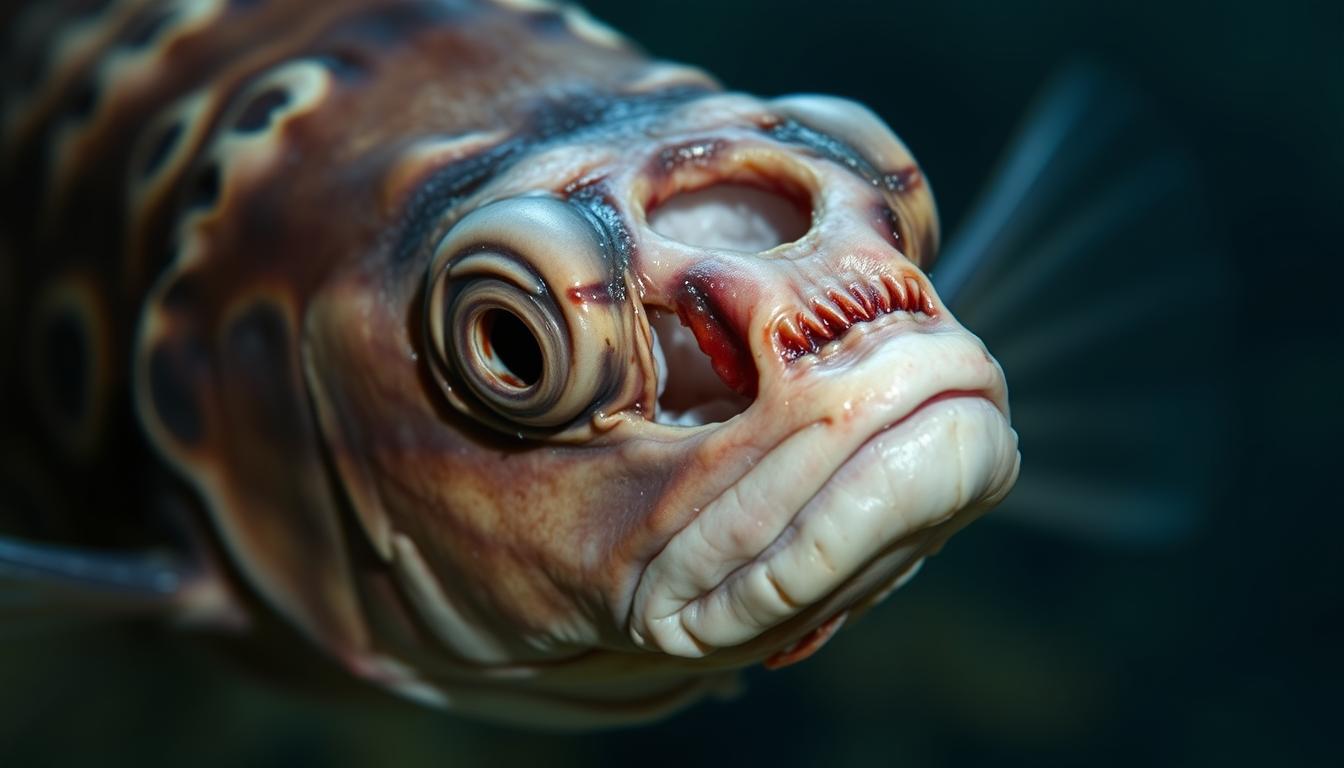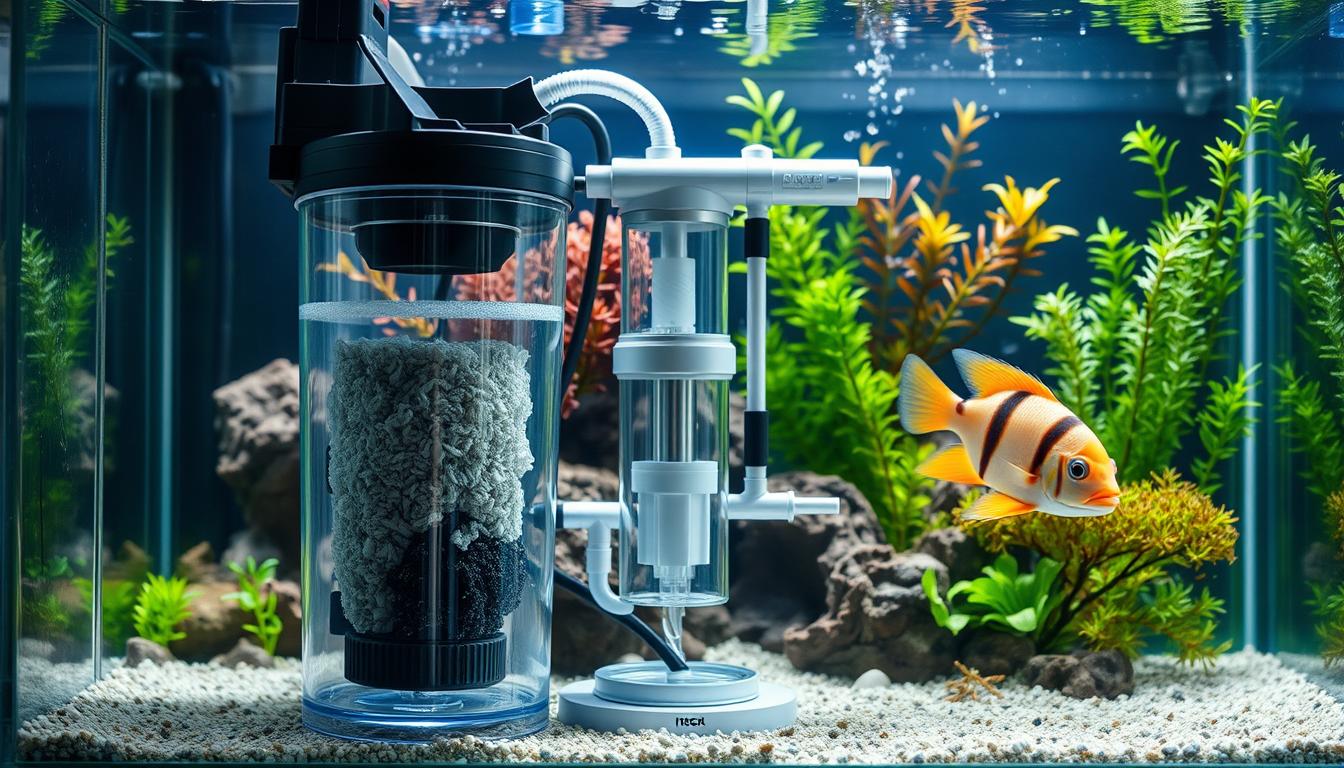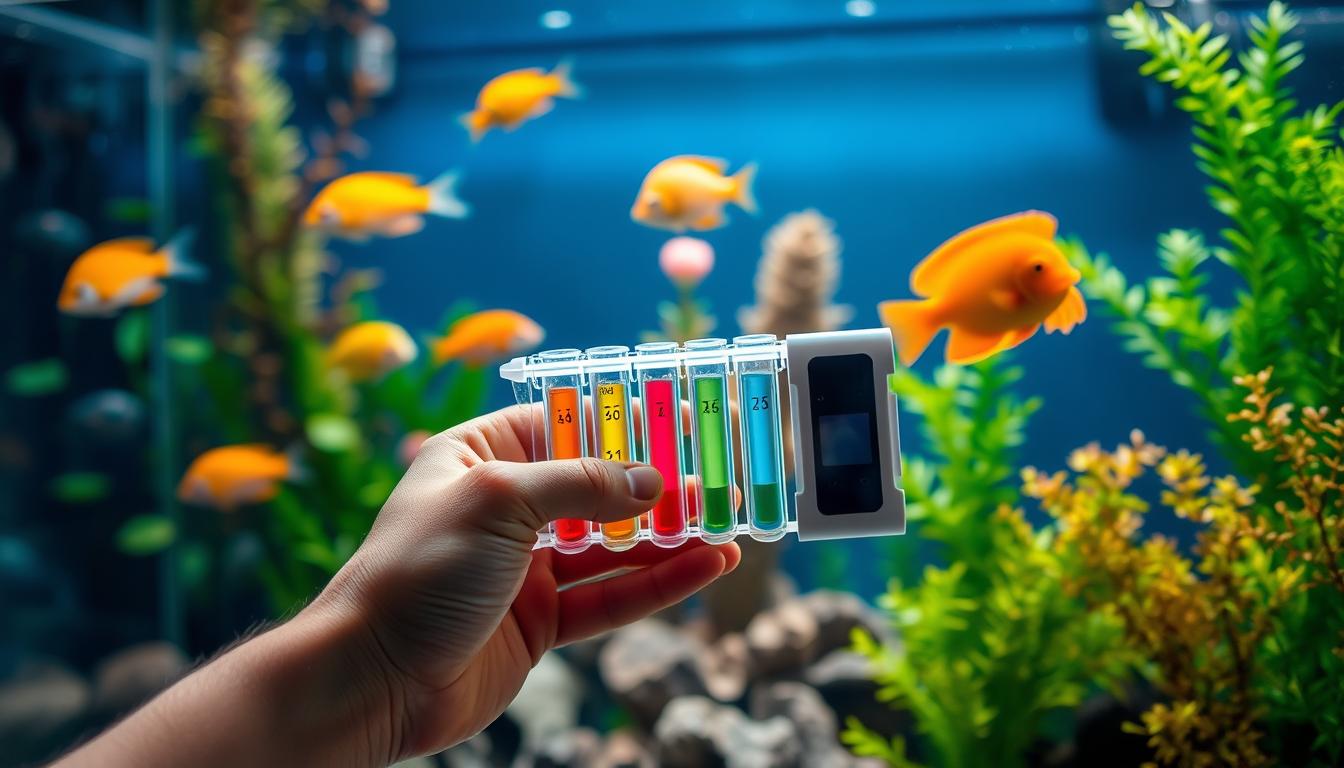How Do You Fix Common Oscar Fish Tank Problems?
This post may contain affiliate links.
What if your favorite pet’s aggressive behavior isn’t just personality – but a cry for help? Many owners of large South American cichlids face unexpected challenges with their aquatic companions. These intelligent creatures, known for forming bonds with humans, require specialized care that goes far beyond basic aquarium maintenance.
Their impressive size (up to 14 inches!) and messy eating habits create unique water quality demands. Without proper tank management, you might unknowingly trigger stress responses that manifest as health issues or territorial aggression. Even experienced keepers sometimes miss the subtle signs of environmental distress in these sensitive animals.
Here’s the reality: Maintaining optimal conditions requires understanding both their biological needs and complex social behaviors. From sudden changes in appetite to unexplained scratches on tank decorations, every detail matters in preventing problems before they escalate.
Key Takeaways
- Large aquatic pets need tanks exceeding 75 gallons for proper movement
- Water quality directly impacts aggression levels and disease resistance
- Territorial disputes often stem from inadequate environmental enrichment
- Consistent feeding routines prevent stress-related health complications
- Regular water testing catches imbalances before they become critical
Understanding Oscar Aquarium Essentials
Did you know your aquatic companion’s intelligence rivals that of many household pets? These South American natives form surprising bonds with their owners, often recognizing faces and routines. Their cognitive abilities mean they thrive in environments tailored to their biological needs.
Unique Traits of Water Wolves
Often called “water dogs,” these cichlids grow faster than many realize – reaching dinner-plate proportions within 18 months. An adult’s weight approaches one pound, creating waste equivalent to five smaller tropical species. This rapid growth demands specialized planning from day one.
Their territorial nature stems from wild origins in crystal-clear streams. In captivity, cramped spaces trigger stress behaviors like glass surfing or fin-nipping. Multiple specimens require carefully designed layouts with visual barriers and retreat zones.
Space and Clean Water Solutions
A 75-gallon setup works for juveniles, but mature pairs need 100+ gallons to establish territories. Depth matters as much as length – these heavy-bodied swimmers need vertical space to maneuver comfortably.
Filtration deserves special attention. Their messy eating habits necessitate systems rated for tanks twice your aquarium’s size. Canister filters with biological media handle waste best, while weekly 30% water changes maintain pristine conditions.
Remember: Clear water isn’t just about looks. It’s vital for preventing bacterial infections in these sensitive giants. Test nitrate levels weekly and keep them below 20ppm for optimal health.
Oscar Fish Tank Problems: Common Issues and Their Causes
Spotting early signs of distress can save your aquatic companion from serious health complications. These intelligent creatures communicate discomfort through subtle changes that demand immediate attention.
Recognizing Signs of Stress and Disease
Watch for sudden appetite changes – some may refuse meals for weeks during stressful periods. Dulled colors, rapid gill movement, or unusual floating patterns often signal underlying issues. “Drama queen” behaviors like lying sideways usually indicate environmental stress rather than fatal conditions.

Understanding Hole in the Head and Other Ailments
The hole in the head condition appears as pitted lesions around the eyes and lateral line, often accompanied by white discharge. Causes range from nutritional deficiencies to parasite infestations (Hexamita). Other common concerns include:
- Ichthyophthirius (white spot disease)
- Progressive fin deterioration from bacterial infections
- Swim bladder disorders causing buoyancy issues
Impact of Aggression and Overcrowding
Territorial disputes escalate quickly in confined spaces, leading to torn fins and facial injuries. Limited swimming areas trigger chronic stress, weakening immune responses. Aim for 50+ gallons per adult to prevent hostile interactions and maintain stable water parameters.
Step-by-Step Fixes for Your Oscar Tank Issues
Maintaining a healthy environment requires more than just clean water. When issues arise, targeted adjustments to your setup can make all the difference for sensitive aquatic life.

How to Adjust Tank Conditions and Filtration
Start by testing water parameters weekly. Keep ammonia at 0ppm and nitrates below 20ppm using liquid test kits. If levels spike, perform 40% water changes over three days rather than single large replacements.
Upgrade your filtration system if you notice cloudy water or surface film. A canister filter handling 500+ gallons per hour works best for adult specimens. Add supplementary sponge filters in corners for extra biological media.
Treat common ailments methodically:
- Hole in Head: Combine metronidazole baths with vitamin-enriched foods
- Ich: Raise temperature to 82°F over 12 hours before adding medication
- Fin Rot: Use erythromycin in hospital tanks with 1 tbsp salt per 5 gallons
Create calm zones using driftwood or artificial plants. Reduce external noise and sudden movements near the aquarium. Feed high-quality pellets at consistent times to prevent food-related stress.
Remember: Quarantine new arrivals for 4 weeks. This simple step prevents 80% of disease outbreaks in established habitats. Pair these fixes with regular filter maintenance for lasting results.
Enhancing Aquarium Maintenance & Preventative Care
Keeping your aquatic habitat thriving requires smart routines that address both visible and invisible threats. Let’s explore two foundational practices that maintain stability while reducing long-term headaches.

Water Quality Monitoring Made Simple
Test strips become your best friends in maintaining ideal conditions. Check these five parameters weekly:
| Parameter | Ideal Range | Testing Frequency |
|---|---|---|
| pH Level | 6.5-7.5 | Every 7 days |
| Ammonia | 0 ppm | Every 3 days |
| Nitrites | Weekly | |
| Nitrates | Every 14 days | |
| Hardness | 4-12 dGH | Monthly |
Sudden spikes in ammonia often trace back to filter issues or overfeeding. Keep a logbook to spot trends – this helps prevent 70% of common health issues.
Food Management Strategies
These intelligent swimmers thrive on predictability. Offer meals at exact times daily using an alarm clock. Stick with their preferred pellet size and brand – sudden changes trigger food rejection and water contamination.
Enhance their diet with vitamin-soaked treats twice weekly. Crushed garlic cloves (1/4 tsp per feeding) boost disease resistance naturally. Remove uneaten portions within 5 minutes to prevent bacterial blooms.
Remember: A stable environment reduces stress-related illnesses. Pair these practices with quarterly filter deep-cleans for a habitat that supports vibrant aquatic life for years.
Conclusion
Caring for these vibrant aquatic companions offers unique rewards that justify the effort. Oscar cichlids showcase remarkable intelligence through curious behaviors and surprising interactions. Like pets with fins, they form bonds that make every challenge worthwhile.
Newcomers often puzzle owners by refusing meals for weeks—a common trait among fish like these adjusting to new homes. Their dramatic “death scenes” typically resolve once settled. Oversized filtration systems and weekly water checks prove vital for maintaining harmony. Crystal-clear water prevents 80% of health issues in sensitive swimmers.
Success hinges on recognizing each cichlid’s distinct personality. What soothes one might stress another. Stay observant and ready to tweak routines. With patience, you’ll create an environment where fish like Oscars thrive for years, showcasing captivating behaviors that reward dedicated keepers.
